 W
WThe Airco DH.1 was an early military biplane of typical "Farman" pattern flown by Britain's Royal Flying Corps during World War I. By the time the powerplant for which it was designed was sufficiently plentiful it was obsolete as an operational aircraft, and apart from a few examples sent to the Middle East it served as a trainer and Home Defence fighter.
 W
WThe Armstrong Whitworth F.K.3 was a British two-seat general-purpose biplane built by Armstrong Whitworth Aircraft during the First World War. By the end of the war it was considered obsolete for combat.
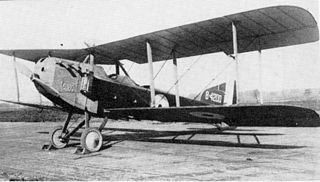 W
WThe Armstrong Whitworth F.K.8 was a British two-seat general-purpose biplane built by Armstrong Whitworth during the First World War. The type served alongside the better known R.E.8 until the end of the war, at which point 694 F.K.8s remained on RAF charge.
 W
WThe Avro 504 was a First World War biplane aircraft made by the Avro aircraft company and under licence by others. Production during the war totalled 8,970 and continued for almost 20 years, making it the most-produced aircraft of any kind that served in any military capacity during the First World War. More than 10,000 were built from 1913 until production ended in 1932.
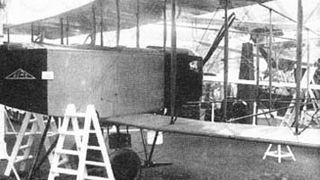 W
WThe Avro 508 was a prototype British reconnaissance aircraft of the 1910s.
 W
WThe Avro 523 Pike was a British multi-role combat aircraft of the First World War that did not progress past the prototype stage. It was intended to provide the Royal Naval Air Service with an anti-Zeppelin fighter that was also capable of long-range reconnaissance and bombing.
 W
WThe Beta 1 was a non-rigid airship constructed for experimental purposes in the United Kingdom by the Army Balloon Factory in 1910. Reconstructed as Beta II, it was used successfully by the British Army and then by the Royal Naval Air Service as HMA No.17, and was finally struck off charge in 1916.
 W
WThe Cody V was a single-engined biplane built by the British-based American aviation pioneer Samuel Franklin Cody in 1912. It was built from the remains of two of Cody's earlier aircraft, and won the 1912 British Military Aeroplane Competition, with two aircraft being purchased for the Royal Flying Corps. It was abandoned after the mid air disintegration of one of the aircraft in April 1913.
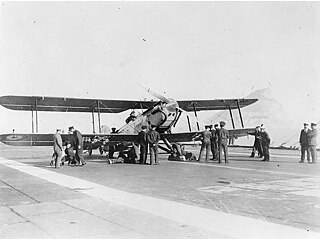 W
WThe Fairey Aviation Company Fairey III was a family of British reconnaissance biplanes that enjoyed a very long production and service history in both landplane and seaplane variants. First flying on 14 September 1917, examples were still in use during the Second World War.
 W
WThe Fairey N.9 was a British experimental floatplane of the First World War; only one was built. It carried out the first shipborne catapult launches from Royal Navy ships, and was later sold to Norway.
 W
WThe Felixstowe Porte Baby was a British reconnaissance flying boat of the First World War, first flying in 1915.
 W
WThe Parnall Panther was a British carrier based spotter and reconnaissance aircraft designed and developed by Parnall and Sons in the latter years of World War I, continuing in service until 1926. A total of 150 Panthers were built by Bristol Aeroplane Company since after the end of World War I Parnall had stopped aircraft manufacture.
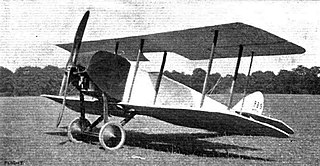 W
WThe Pemberton-Billing P.B.9 was a First World War British single-seat open cockpit equal span biplane scout aircraft. built by Pemberton-Billing Limited, which later became the Supermarine Aviation Works. Only one P.B.9 was built.
 W
WThe Royal Aircraft Factory B.E.2 was a British single-engine tractor two-seat biplane designed and developed at the Royal Aircraft Factory. Most production aircraft were constructed under contract by various private companies, both established aircraft manufacturers and firms that had not previously built aircraft. Around 3,500 were manufactured in all.
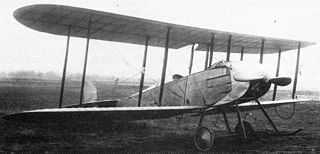 W
WThe Royal Aircraft Factory B.E.8 was a British two-seat single-engined general purpose biplane of the First World War, designed by John Kenworthy at the Royal Aircraft Factory in 1913. Small numbers were used by the Royal Flying Corps over the Western Front in the first year of the war, with the type being used as a trainer until 1916.
 W
WThe Royal Aircraft Factory B.E.9 was a British experimental reconnaissance aircraft of World War I.
 W
WThe Royal Aircraft Factory H.R.E.2 was intended as a Naval reconnaissance floatplane. The single example built was serving with the Royal Naval Air Service at the start of World War I.
 W
WThe Royal Aircraft Factory R.E.1 was an experimental two-seat single-engined biplane from before World War I, intended to develop reconnaissance aircraft.
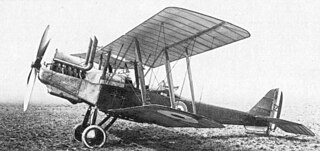 W
WThe Royal Aircraft Factory R.E.8 was a British two-seat biplane reconnaissance and bomber aircraft of the First World War designed and produced at the Royal Aircraft Factory. It was also built under contract by Austin Motors, Daimler, Standard Motors, Siddeley-Deasy and the Coventry Ordnance Works.
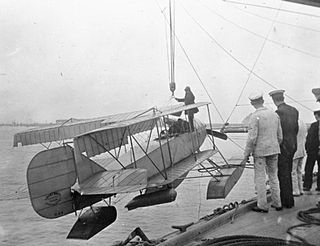 W
WThe Short Admiralty Type 81 was a series of British two-seat floatplanes built prior to the First World War, and used by the Royal Naval Air Service in the early years of the war. They were powered by 160 hp (120 kW) Gnome Lambda-Lambda 14 cylinder two-row rotary engines and had folding wings to aid storage on ship, hence the popular name Short Folder, shared with a number of other seaplanes made by Short Brothers.
 W
WThe Short Bomber was a British two-seat long-range reconnaissance, bombing and torpedo-carrying aircraft designed by Short Brothers as a land-based development of the very successful Short Type 184.
 W
WShort Folder is a generic name often applied to several different Short Brothers' aircraft types designed and built prior to and during World War I. Short Brothers developed and patented folding wing mechanisms for ship-borne aircraft from 1913; the wings were hinged so that they folded back horizontally alongside the fuselage, reducing the storage space required for stowing them aboard ship.
 W
WThe Short S.41 was a British single-engined biplane built for the Royal Navy in 1912. Capable of being operated either on wheels or floats, it was successful enough for a further two similar aircraft to be built, with the type remaining in use until the early years of the First World War.
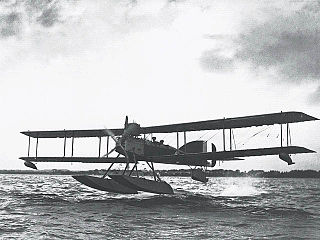 W
WThe Short Admiralty Type 184, often called the Short 225 after the power rating of the engine first fitted, was a British two-seat reconnaissance, bombing and torpedo carrying folding-wing seaplane designed by Horace Short of Short Brothers. It was first flown in 1915 and remained in service until after the armistice in 1918. A Short 184 was the first aircraft to sink a ship using a torpedo, and another was the only British aircraft to take part in the Battle of Jutland.
 W
WThe Short Type 827 was a 1910s British two-seat reconnaissance floatplane. It was also known as the Short Admiralty Type 827.
 W
WThe Sopwith 1+1⁄2 Strutter was a British single- or two-seat multi-role biplane aircraft of the First World War. It was the first British two-seat tractor fighter and the first British aircraft to enter service with a synchronised machine gun. It was given the name 1+1⁄2 Strutter because of the long and short cabane struts that supported the top wing. The type was operated by both British air services and was in widespread but lackluster service with the French Aéronautique Militaire.
 W
WThe Sopwith Baby was a British single-seat tractor seaplane used by the Royal Naval Air Service (RNAS) from 1915.
 W
WThe White & Thompson Bognor Bloater was a British First World War two-seat reconnaissance biplane. It was designed and built by White & Thompson Limited of Middleton-on-Sea, near Bognor Regis, Sussex for the Admiralty as a competitor to the Royal Aircraft Factory BE.2. Designated N.T.3 by White & Thompson, it is not known if there was an official designation for the aircraft, which was known in service with the nickname Bognor Bloater.
 W
WThe Wight Converted Seaplane was a British twin-float patrol seaplane produced by John Samuel White & Company Limited.
 W
WThe Wight Pusher Seaplane, or Navyplane, was a British twin-float patrol seaplane produced by John Samuel White & Company Limited.